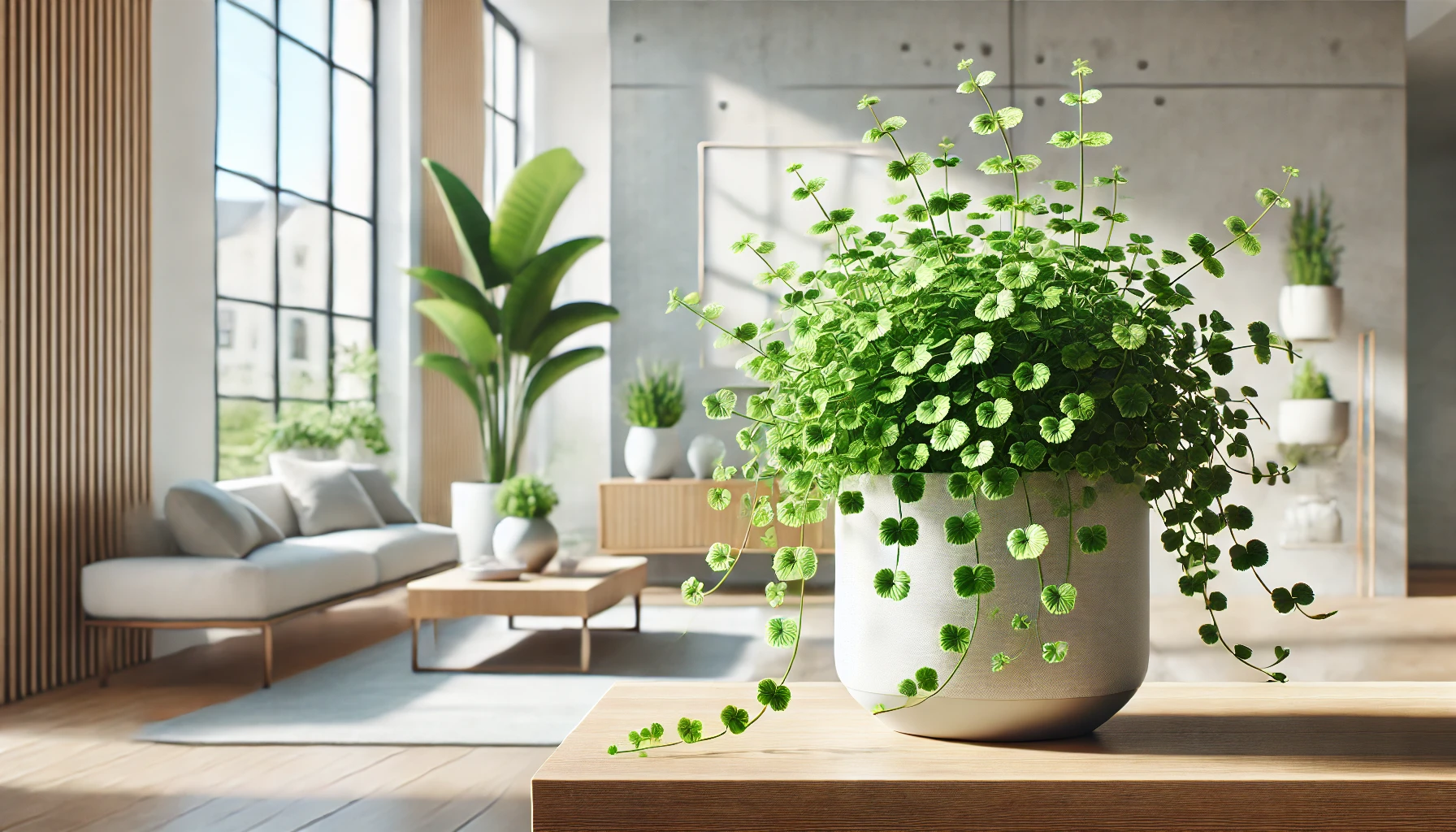
Creeping Charlie, known scientifically as Glechoma hederacea, is a popular plant appreciated for its versatility and resilience. This low-growing groundcover features round, scalloped leaves and delicate purple flowers, making it an attractive addition to any indoor space. Though it only reaches about 2 inches in height, its trailing stems can extend several feet, creating a lush, green cascade when grown in hanging baskets or as a groundcover in pots.
A Look Back: History and Ideal Growing Conditions
Originally hailing from Europe and Asia, Creeping Charlie has been a part of gardens and homes for centuries. It was introduced to North America by settlers who valued its medicinal properties and hardiness. Over time, it has become a favorite for those seeking a robust and easy-to-grow plant that can thrive in various conditions.
Creeping Charlie prefers partial shade, although it can also tolerate full sun if given enough water. It thrives in moist, well-drained soil and can adapt to a wide range of environments. This plant is frost-hardy and can survive in temperatures as low as 30°F, making it suitable for indoor growth in most climates.
Is Creeping Charlie Pet-Friendly? Understanding Toxicity
Despite its charm, Creeping Charlie can be toxic to pets, particularly cats, dogs, and horses. Ingesting this plant may cause vomiting, diarrhea, and lethargy in animals. If you have pets that are curious nibblers, it’s essential to place this plant out of their reach or consider safer alternatives.
Safe Alternatives for Pet Owners
If you’re concerned about pet safety, consider opting for non-toxic alternatives like the Spider Plant (Chlorophytum comosum), Boston Fern (Nephrolepis exaltata), or the Areca Palm (Dypsis lutescens). These plants are beautiful, easy to care for, and safe for pets.
Caring for Creeping Charlie: Essential Tips
Creeping Charlie is low-maintenance, but following some best practices will help it thrive.
Watering and Humidity
Creeping Charlie enjoys consistently moist soil. Water regularly, especially during dry periods, but avoid overwatering to prevent root rot. In more humid environments, you may need to water less frequently, while drier indoor conditions might require more attention to keep the soil from drying out.
Soil, Light, and Temperature
This plant is not fussy about soil type but prefers well-drained, fertile soil. It does best in partial shade but can tolerate brighter light with adequate moisture. Temperature-wise, Creeping Charlie is adaptable, thriving in a range of indoor temperatures as long as they are not too extreme.
Common Problems and How to Address Them
While Creeping Charlie is generally a hardy plant, it can face a few challenges.
- Overgrowth: Due to its vigorous growth, Creeping Charlie can become invasive if not managed properly. Regular pruning helps control its spread and keeps it looking neat.
- Pests: Though uncommon, pests like aphids or spider mites can sometimes infest this plant. Treat infestations early with insecticidal soap or neem oil.
- Root Rot: Overwatering or poor drainage can lead to root rot. Ensure the soil is well-drained and reduce watering if you notice yellowing leaves.
Dealing with Invasiveness and Safe Alternatives
Creeping Charlie is known for its rapid growth, which can sometimes be invasive, especially in outdoor settings. If you’re concerned about its invasiveness indoors, consider less aggressive alternatives like the Pothos (Epipremnum aureum) or Swedish Ivy (Plectranthus verticillatus), which offer similar aesthetic appeal without the risk of overgrowth.
Propagation and Benefits of Creeping Charlie
Propagating Creeping Charlie is easy, making it an ideal plant for those who love to share their green companions. You can propagate it through stem cuttings or by dividing the plant. Simply plant the cutting or divided section in moist soil, and it will quickly take root and begin to grow.
Aside from its aesthetic benefits, Creeping Charlie is also effective at controlling soil erosion and suppressing weeds due to its dense growth habit. Its fast growth makes it a great choice for filling in bare spots or adding greenery to a space quickly.
Final Thoughts
Creeping Charlie is a versatile and hardy indoor plant that can add a touch of lush greenery to any space. With minimal care, it will thrive, providing vibrant foliage and delicate flowers. However, if you have pets, be mindful of its toxicity, or consider safer alternatives. Whether you’re looking to enhance your home’s greenery or fill in a gap in your indoor garden, Creeping Charlie is a fantastic option for plant enthusiasts at any level.



